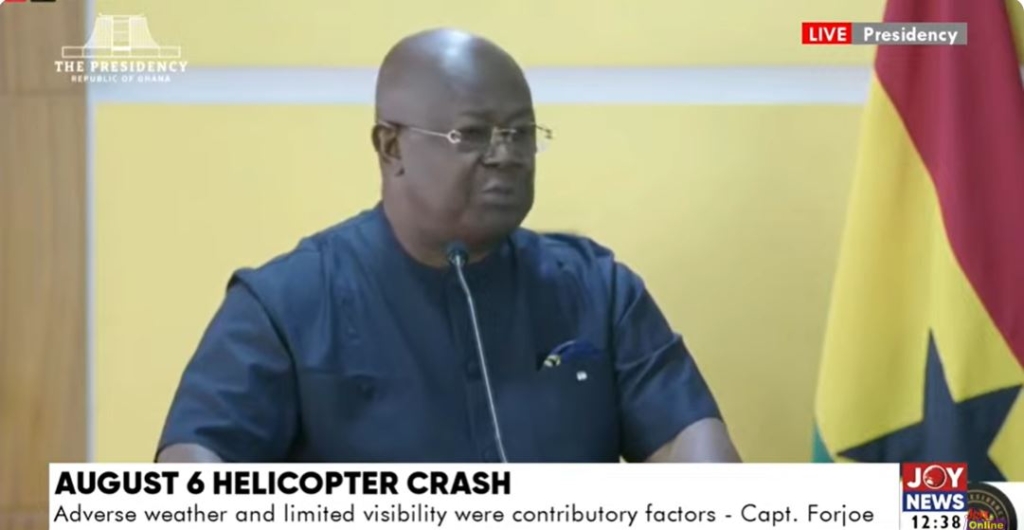
The investigative committee probing the August 6 helicopter crash that claimed eight lives has dismissed reports suggesting that the aircraft exploded mid-air, confirming that the explosion occurred only upon impact with the ground.
Presenting the committee’s findings in Accra on Tuesday, Captain (Rtd) Paul Forjoe, the lead investigator, explained that the crash was caused by a sudden loss of altitude and lift triggered by a powerful downdraft — a severe downward rush of air common in turbulent weather conditions.
“In terms of the explosion, there was no explosion before,” Capt. Forjoe clarified. “The Z-9 helicopter’s fuel tank is located directly beneath the passenger seats. So when it impacted — and don’t forget, it was doing a flight to Obuasi and back, meaning it was fully fueled — that is when the explosion took place.”

He added that the team had carefully analysed both physical evidence and eyewitness accounts, which consistently supported the finding that the blast occurred only after ground impact.
“We looked at everything — the impact site, the timing, and the eyewitness reports. All the accounts tally with what we found,” he said.
On August 6, 2025, a Ghana Air Force Harbin Z-9 helicopter carrying eight people to an event about fighting illegal mining crashed into a forested mountainside in the Ashanti region, killing all eight people on board.
Among the dead were Ghana’s defence minister Edward Omane Boamah and environment minister Ibrahim Murtala Muhammed.
The rest were acting deputy national security coordinator Limuna Mohammed Muniru, vice chairman of the ruling National Democratic Congress (NDC) Samuel Sarpong, former parliamentary candidate Samuel Aboagye, Squadron Leader Peter Bafemi Anala, Flying Officer Twum Ampadu and Sergeant Ernest Addo Mensah.
According to the Ghana Armed Forces, the helicopter took off from Kotoka International Airport in Accra at 9:12 a.m., heading northwest into the interior toward the gold-mining area at the Obuasi Black Park in Obuasi, when it went off the radar.
The helicopter’s wreckage was found later, with all of the victims burnt beyond recognition in a post-crash fire.
Footage of the crash site showed debris on fire in a forest as people circled around to help.
The crash was one of Ghana’s worst air disasters in more than a decade.
The investigative committee has since made several safety recommendations, including modernising the Ghana Air Force fleet, acquiring aircraft equipped with terrain avoidance warning systems, improving weather monitoring and investing in pilot training simulators.